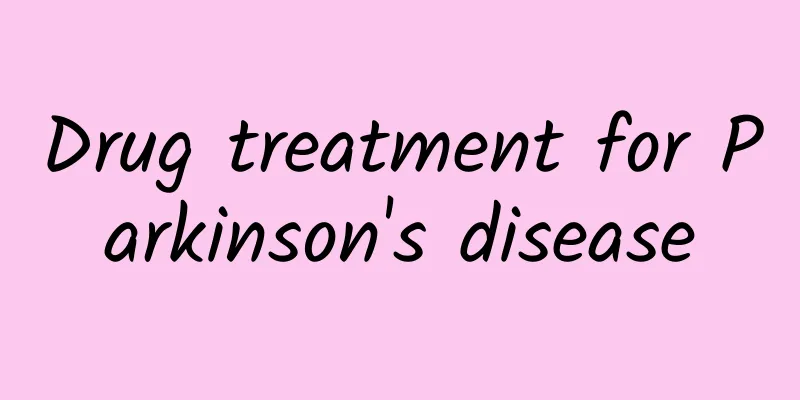Drug treatment for Parkinson's disease

|
Parkinson disease (PD) is an adult-onset progressive neurodegenerative disorder first described by James Parkinson as "parkinsonism" more than 200 years ago [1]. Although PD has traditionally been considered a motor disease based on its hallmark features such as tremor, rigidity, and bradykinesia, it is now recognized that PD is a complex disease that also includes a variety of disabling nonmotor manifestations. PD is an adult-onset neurodegenerative disease. The incidence rate increases rapidly after the age of 60, with an average age of diagnosis of 70.5 years[2]. Its three main motor features are tremor, bradykinesia, and rigidity. It is now clear that PD is not simply a disease of dopamine depletion, but that cell loss and biochemical disturbances also occur in other brain regions within and outside the basal ganglia. Treatment of PD requires careful consideration of the patient's symptoms and signs, age, disease stage, degree of functional disability, and level of physical activity and productivity. All pharmacological treatments for Parkinson's disease (PD) are symptomatic. A variety of symptomatic pharmacological, nonpharmacological, and surgical treatments are available to maximize motor and nonmotor function and quality of life over the course of the disease. Treatment should generally be started when motor symptoms affect function and quality of life. Patients are often afraid of using levodopa, and this issue should be discussed early to avoid unnecessary delays in treatment. Levodopa is generally used as initial treatment for most patients with early PD who wish to control motor symptoms [2]. Among dopaminergic therapies, levodopa has superior effects on motor function, daily activities, and quality of life and is often the best tolerated, especially in older adults. Many patients may develop levodopa-related motor complications within a few years of starting levodopa treatment. A large number of PD patients develop levodopa-related motor complications within 5-10 years of starting levodopa treatment, including motor fluctuations ("wearing off phenomenon") and various complex motor fluctuations [3,4]. It is estimated that at least 50% of patients will develop these motor complications after 5-10 years of treatment [5]. The younger the age of PD onset, the higher the risk of motor complications. Levodopa is usually titrated initially with 50 mg/200 mg carbidopa/levodopa tablets, taken 1/2 tablet 2-3 times a day with meals. This dose is tolerated for several days to a week before further titration. Some patients may experience adequate symptom relief with only 1/2 tablet 2-3 times a day; others may require up to 2 tablets 3 times a day, starting in the morning and every 4-6 hours; bedtime dosing is usually not necessary in the early stages of the disease. Although patients often experience significant relief within a few days of starting treatment doses, prospective studies of early PD naïve patients have shown that maximal symptom relief with levodopa (300 mg/day) occurs after at least 1 month of medication and may occur after 5 months of 300 mg/day [6]. Some patients who continue to have significant tremor despite levodopa may benefit from the addition of amantadine or an anticholinergic drug, such as trihexyphenidyl. Nausea, drowsiness, dizziness, and headache are the most common early side effects of levodopa; they are usually mild and can be minimized by starting the drug at a low dose and slowly titrating the dose. More serious adverse reactions, seen primarily in older patients, may include confusion, hallucinations, delusions, agitation, psychotic symptoms, and orthostatic hypotension. Of note, levodopa should not be stopped abruptly in patients with PD, as abrupt withdrawal can occasionally cause a syndrome similar to neuroleptic malignant syndrome or akinetic crisis. This neuroleptic malignant syndrome is known as parkinsonian-hyperpyretic syndrome . Cases of death have been reported as a result.[7,8] In some cases, initial treatment with a dopamine agonist (DA), monoamine oxidase type B (MAO B) inhibitor, or amantadine can replace early levodopa therapy. For example, younger patients at high risk for dyskinesia may consider using DA, and patients with mild symptoms who prefer once-daily dosing may prefer MAO B inhibitors. Most of these patients will progress to require levodopa within a few years. In short, the drug treatment of Parkinson's disease is mainly aimed at controlling symptoms. The specific drug selection and usage and dosage should strictly follow the doctor's advice. The pharmacist here reminds you that if you have any abnormal reactions during medication, please contact your attending physician in time and do not stop or reduce the dosage without authorization. References: 1. Parkinson J. An Essay on the Shaking Palsy, Sherwood, Neely, and Jones, London 1817. 2. Pringsheim T, Day GS, Smith DB, et al. Dopaminergic Therapy for Motor Symptoms in Early Parkinson Disease Practice Guideline Summary: A Report of the AAN Guideline Subcommittee. Neurology 2021; 97:942. 3. Calabresi P, Di Filippo M, Ghiglieri V, et al. Levodopa-induced dyskinesias in patients with Parkinson's disease: filling the bench-to-bedside gap. Lancet Neurol 2010; 9:1106. 4. Aquino CC, Fox SH. Clinical spectrum of levodopa-induced complications. Mov Disord 2015; 30:80. 5. Olanow CW, Watts RL, Koller WC. An algorithm (decision tree) for the management of Parkinson's disease (2001): treatment guidelines. Neurology 2001; 56:S1. 6. Frequin HL, Schouten J, Verschuur CVM, et al. Levodopa Response in Patients With Early Parkinson Disease: Further Observations of the LEAP Study. Neurology 2023; 100:e367. 7. Factor SA. Fatal Parkinsonism-hyperpyrexia syndrome in a Parkinson's disease patient while actively treated with deep brain stimulation. Mov Disord 2007; 22:148. 8. Newman EJ, Grosset DG, Kennedy PG. The parkinsonism-hyperpyrexia syndrome. Neurocrit Care 2009; 10:136. |
<<: World Parkinson's Day | 5 Parkinson's Disease Myths, 1 of Them Is True →
Recommend
What to do if you have painful sex after menopause
We all know that women's menopause means that...
You’ve seen 3D movies, but have you ever seen 3D laparoscopic surgery?
Speaking of surgery, everyone must be familiar wi...
What should I do if I suffer from severe hair loss after childbirth?
It is common for women to experience hair loss af...
Which fruits should not be eaten by gout patients? Patients must read
Gout is a common disease in life. In order to all...
What should you pay attention to when choosing a shower head? What causes shower heads to rust?
There are many brands of shower heads, but the in...
What color of kitchen floor tiles is stain-resistant? What material is better for kitchen floor tiles?
We all know that the kitchen is an important plac...
How to treat ovarian cysts and pain?
I believe everyone knows the importance of ovarie...
How to regulate menstruation when liver fire is strong
Women with excessive liver fire generally cannot ...
How to decorate the living room without a suspended ceiling? Will the living room look ugly without a suspended ceiling?
We all know that home decoration is a complicated...
What to do if you have severe menstrual pain?
In fact, many women are more likely to suffer fro...
What should I do if my teeth turn yellow due to frequent smoking? Tips for whitening teeth
It can be said that some smokers who smoke freque...
How to make pigeon soup after abortion?
If a woman wants to be a mother and have a baby, ...
What to do if women have low estrogen levels
Once women have endocrine disorders, it will seri...
What happens if an ovary ruptures? These reasons are most likely!
Some women have never had ovarian disease before ...









